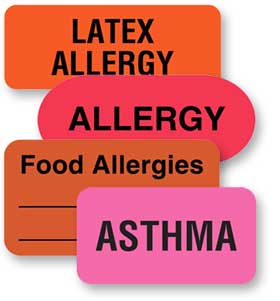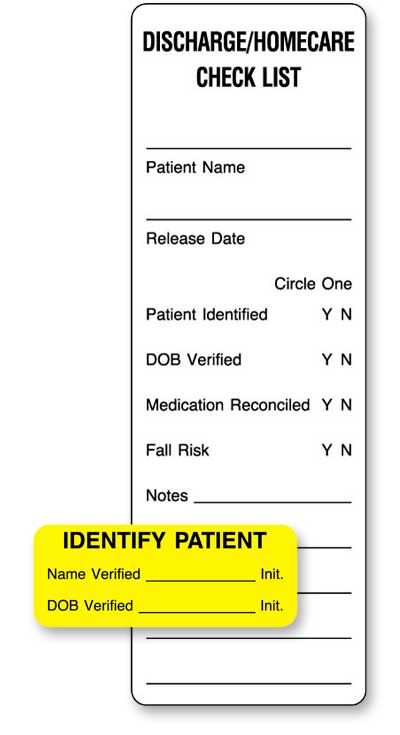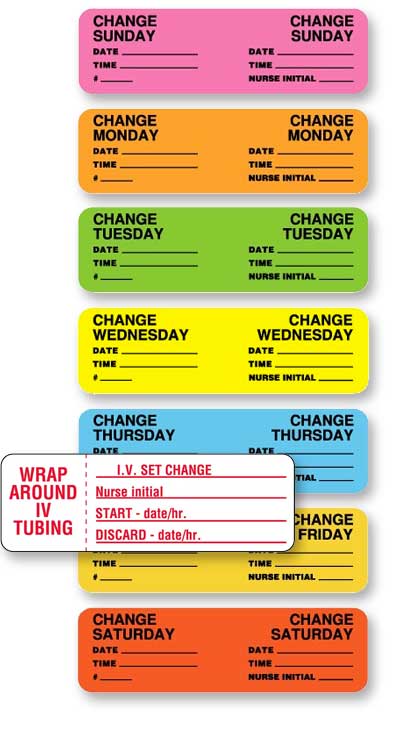Patient Communication
How do you elevate patient communications? One initiative, commit to sit, demonstrated a way to improve nurse-patient interactions. Asking to sit down and speak with the patient and then sitting, not standing, during that communication, significantly improved the patient experience.
Furthermore, the Patient Experience Journal found top-performing hospitals shared a key characteristic. When nurses communicate well with their patients, patients will likely feel more at ease and more satisfied with their care encounters.
But, it’s more than communicating with patients. In fact, nurses are a communications hub. They relay and interpret information between physicians, caregivers, family members and patients. Effective communication with all constituents is imperative to improving patient outcomes and elevating patient satisfaction.
Labels Improve Patient Satisfaction

Labels communicate information. Sometimes it’s when nurses and the clinical staff are unable to do so in person. And, other times it assists with treatments, patient safety and follow-up conversations.
For example, wristbands are the vehicle health systems use to communicate patient information. Medications and treatments are frequently printed in barcode form and placed on the wristband. A single, comfortable wristband that accommodates the treatment regimen improves communication, patient care and patient satisfaction.
Furthermore, medical alert and safety labels applied to wristbands, patient charts, the bed, IV tubing and more provide a visual reminder to a medical issue and a catalyst for additional conversations. Discussing the issue can put the patient at ease while providing the caregiver with additional insights.
Lastly, when caring for extremely sick patients relegated to contact isolation, nurses were reluctant to engage in the ”commit to sit” initiative. But, implementing safety protocol education and communications can make a difference. Airborne and contact infection prevention labels, disposable pads for sitting and using extra protective garments, where necessary, helped reduce concerns.

Scripting
Scripting has become a debated topic in healthcare. Hospitals say standard communication outlines provide a solid foundation for interactions, making patients feel more comfortable and less anxious. On the other hand, nurses feel scripting patient care goes too far, making patients feel interactions are less personal.
But regardless of which side of the debate you fall on, using standard scripting information can provide valuable assistance to busy nurses and clinical staff. For example, chart labels that verify patient identity and discharge checklists help ensure proper steps are taken during discharge which prevent misunderstandings and readmissions.
Don’t Make Nurses Walk A Mile For Supplies

It’s frustrating for patients and staff when nurses have to stop what they are doing to track down supplies. Instead, keep frequently needed items in patient rooms or in their carts . Plus, maintain multiple stockrooms and supply cabinets, that contain a wider variety of items, throughout the facility and replenish them regularly.
Start by defining the items that nurses need frequently and on demand. For example, IV labels are one of those frequently used items. IV set changes and change minders label kits take up a small footprint on shelfs or carts and are important to stock.
Minimizing the time and effort nurses spend on unnecessary tasks increases the time they spend with patients.
United Ad Label
Thoughtful face-to-face patient communication and one-to-one interaction with the clinical staff have proven to enhance patient care and improve patient satisfaction. Supplementing those conversations with other forms of communication, including labels, will help you to further augment your care.
UAL’s label and healthcare knowledge helps to elevate communications among the clinical staff and further enhance patient satisfaction. Contact us to learn more.